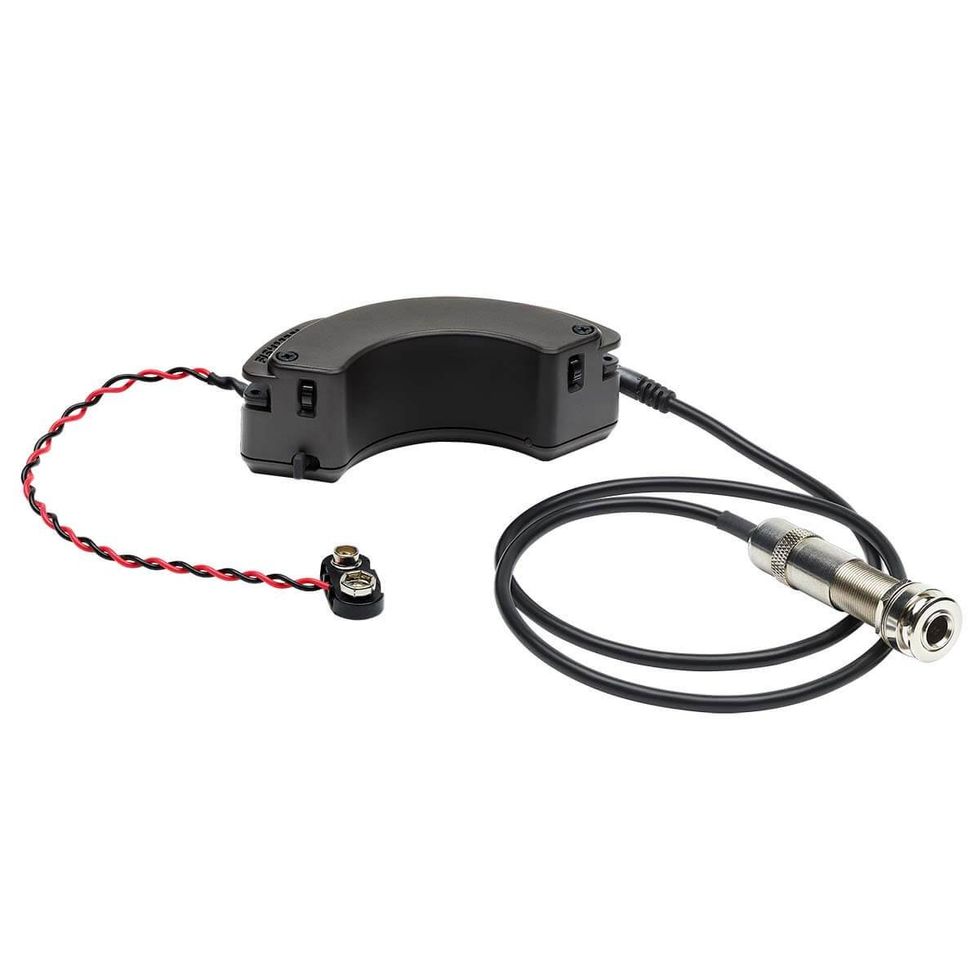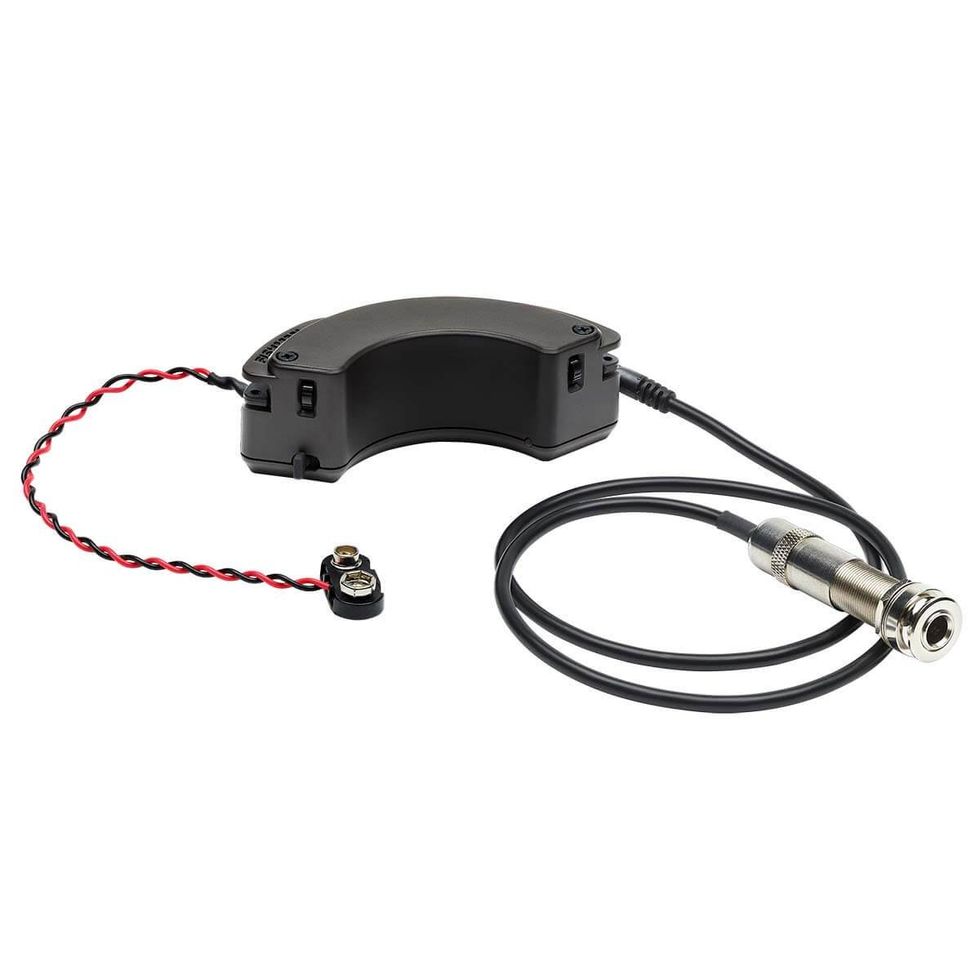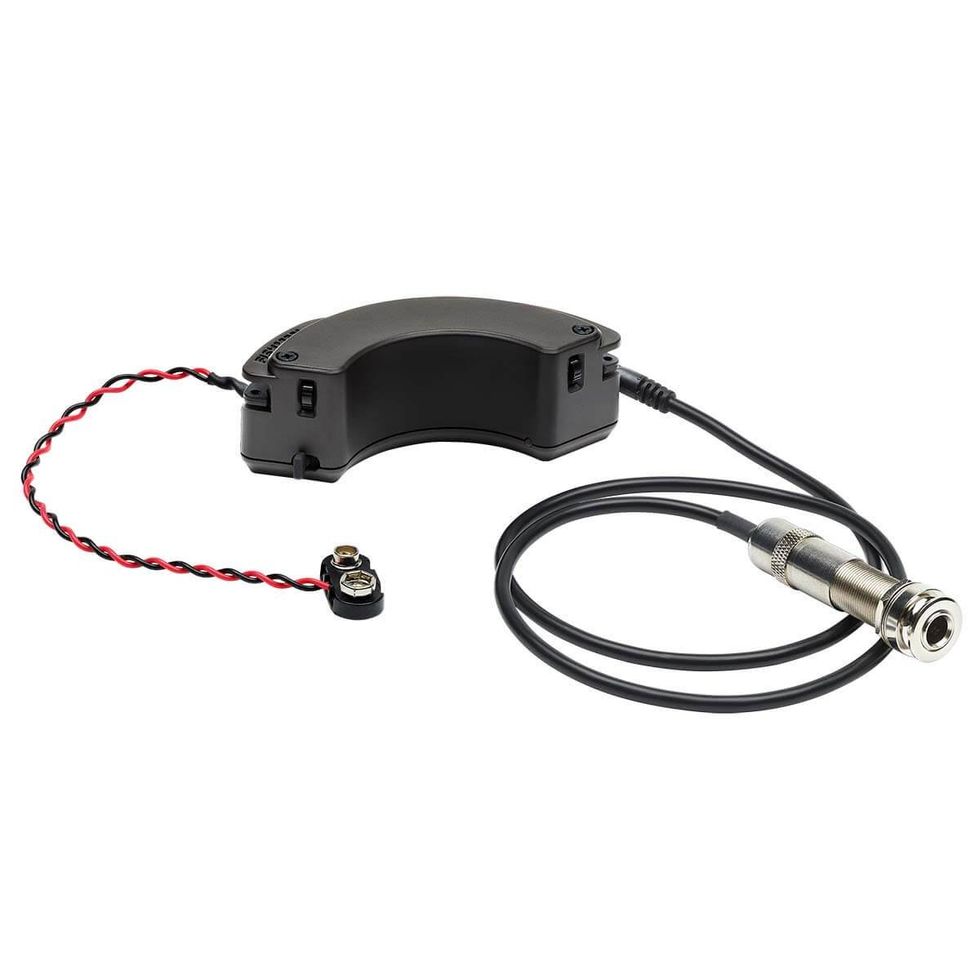I gotta tell you that some of the things we did to our guitars when I was younger were not the best ideas at the end of the day. For example, I recall that many times when a friend would buy a new Gibson or Fender guitar, the very first thing they would change were the tuning keys. We all seemed to believe that a change to Schaller, or the ever-popular Grover tuning keys, would be “better” because they were “superior” keys – supposedly from their tuning stability alone. Although this may indeed have been true from a technical standpoint, the keys’ increased mass had a profound effect on the tone of the guitar!
Let’s take an example from Fender by examining their old standby “safety slot” tuning keys. These stock Fender keys were extremely light, and you were forced to cut the string and stick it squarely down the middle hole in the key’s shaft and then bend it in a right angle before you started to tune the instrument up. I cannot tell you how many Fender instruments’ tuning keys were altered right from the get-go, without much thought at all. The truth is that any change in the mass of the headstock will change the tone of your instrument to some degree. It is now considered gospel to leave those safety slots right where they are (or were, in many cases).
Why? Because these keys aided in the vibrations transmitted from the body of the instrument all the way up through the bolton neck and into the headstock. Look at players like Eric Johnson and you’ll notice that he leaves his old stock safety slots alone. Simply put, he likes the way they sound and that’s all there is to it. Safety slot tuning keys are a sonically important piece in that famous Fender “zing.” This is something that you can feel when you grab the end of the headstock – a very distinct “buzz” will actually go right through your fingers on a good Fender guitar.
Okay, so what happened to the cheaper Gibson Kluson keys (found on many Les Pauls Juniors, Les Paul Specials, Les Paul Standards, SG Standards, ES-335s, etc.)? These instruments were also victims of key changing in far too many cases. I’ve found that if you properly care for these old style Klusons they will hold their tune just as well as more expensive keys, while retaining the tone these instruments are famous for. Hindsight is definitely 20/20 here. You might be in the group of people who feel that heavier keys are “better” and that is certainly okay – just be aware of the effects that changing the tuning keys’ critical mass will have on your instrument. These are simply observations from my listening experiences; you will certainly have your own perceptions.
| Be aware of the effects that changing the tuning keys’ critical mass will have on your instrument. |
There is also an interesting development that I have recently noticed. I mentioned many players using Grover keys as replacements on instruments such as the Gibson ES-335. Oddly enough, not too long ago, I purchased a brand new Gibson ES-335 DT. When I first heard it, it sounded phenomenal for a brand new guitar – a good friend of mine who was with me at the time was absolutely floored by this blinding red beauty. In fact, we compared it to his original blond 1959 ES-335 a few moments later and they both resonated at about the same pitch. It was an amazing discovery.
Now here’s the kicker: this new ES-335 of mine came equipped with Grover keys as stock. However, these keys – probably of Korean manufacture – were far lighter than their original counterparts! Since these new contemporary Grovers have far less mass than the old versions, the effect is about the same as the results found with the Fender safety slot tuning keys. You can bet that this guitar rings like a bell, and I am not planning on changing anything. It sounds much too good to mess with and as I’ve always said, “If it ain’t broke, don’t fix it.”
Since we’re on the subject of tuning keys, I might as well address another critical component of tone, in relation to the headstock – your guitar’s nut. Back in the early to mid-‘70s, there was a major trend in the use of brass nuts. It was believed that brass nuts (or other parts made of brass, such as bridges) provided us with more sustain. I seem to remember that all brass was good for was making an instrument quite a bit heavier that ever before – yikes! If you want improvements in your guitar’s overall sound, I would recommend experimenting with Graph Tech’s line of manmade ivory saddles and nuts. I have to admit that more than a few of my guitars are equipped with these replacement nuts and saddles, and what a huge difference they have made in my tone.
I truly believe that maximizing the guitar in question for a particular given application is the best way to go about strengthening your signal chain. We’ll see you next time!
Dean Farley
Dean Farley is the chief designer of "Snake Oil Brand Strings" (www.sobstrings.net) and has had a profound influence on the trends in the strings of today











![Rig Rundown: Russian Circles’ Mike Sullivan [2025]](https://www.premierguitar.com/media-library/youtube.jpg?id=62303631&width=1245&height=700&quality=70&coordinates=0%2C0%2C0%2C0)













